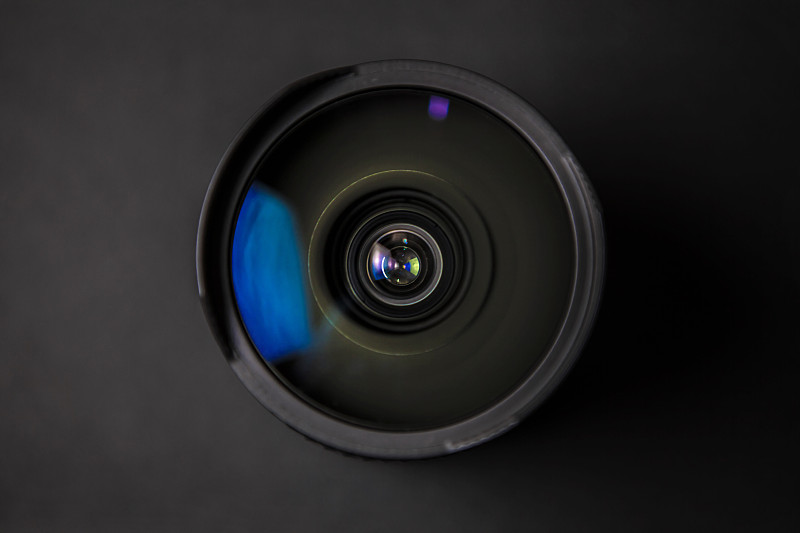

A lens is a core component of optical devices such as cameras microscopes and thermal infrared cameras. It focuses or diverges light through refraction or reflection to achieve image formation. Thermal image cameras often rely on precisely engineered lenses to capture accurate thermal data making lens performance crucial for their functionality.
1. **Optical Contamination** Dust moisture or oil adhering to the lens surface causes blurred imaging reduced contrast or light spot interference. This degradation can significantly affect the quality of images captured by thermal cameras leading to inaccurate temperature readings.
2. **Mechanical Damage** Scratches cracks or coating peeling on the lens leads to light scattering chromatic aberration or ghosting glare. Such damage can distort the thermal imagery produced by thermal infrared cameras making it difficult to analyze thermal patterns accurately.
3. **Focusing/Zooming Failure** Worn mechanical structures loose gears or malfunctioning electronic control systems result in inaccurate focusing or stuck zooming. For thermal image cameras improper focus can lead to incorrect thermal data collection undermining the reliability of temperature assessments.
4. **Temperature Sensitivity Issues** Thermal expansion and contraction cause lens displacement or deformation leading to focal length shift image distortion or edge blurring. These changes can impact the precision of thermal cameras especially when capturing high-resolution thermal images. 5. **Sealing Failure** Aged seals allow water dust ingress or internal lens mold growth especially in high humidity environments. Compromised sealing can damage the lens and reduce the effectiveness of thermal infrared cameras potentially rendering them unreliable for thermal inspections.
1. **Thermal Stress Detection** Thermal cameras are used to monitor the temperature distribution of lenses in high and low-temperature environments. By analyzing stress concentration points caused by thermal expansion coefficient differences between lens elements and barrels engineers can optimize structural design to prevent lens failure.
2. **Heat Dissipation Evaluation** Thermal image cameras detect the temperatures of heating components like laser lenses and infrared filters inside infrared lenses. This data helps verify the effectiveness of heat dissipation paths ensuring that overheating does not degrade the optical performance of lenses used in thermal infrared cameras.
3. **Fault Location** Thermal infrared cameras identify temperature anomalies to pinpoint wear or jams in internal mechanical parts such as focusing motors and zoom gears caused by frictional heating. This capability assists in predicting mechanical failures and scheduling timely maintenance for lens systems.
4. **Optical System Optimization** Using thermal cameras engineers analyze the temperature field of lenses during operation. Based on the thermal data they can adjust lens materials or coating processes to reduce the impact of thermal distortion on imaging accuracy particularly for the thermal stability debugging of lenses in infrared thermal imaging camera systems.

LASER Photonics China 2025: A new chapter of optoelectronic technology innovation and global cooperation From March 11 to 13, 2025, the most influential event in Asia's optoelectronics industry, LASER Photonics China, will be held in Shanghai New International Expo Center. As the flagship exhibition in China's laser, optics and optoe...

LASER Photonics China 2025: A new chapter of optoelectronic technology innovation and global cooperation From March 11 to 13, 2025, the most influential event in Asia's optoelectronics industry, LASER Photonics China, will be held in Shanghai New International Expo Center. As the flagship exhibition in China's laser, optics and optoe...

LASER Photonics China 2025: A new chapter of optoelectronic technology innovation and global cooperation From March 11 to 13, 2025, the most influential event in Asia's optoelectronics industry, LASER Photonics China, will be held in Shanghai New International Expo Center. As the flagship exhibition in China's laser, optics and optoe...

LASER Photonics China 2025: A new chapter of optoelectronic technology innovation and global cooperation From March 11 to 13, 2025, the most influential event in Asia's optoelectronics industry, LASER Photonics China, will be held in Shanghai New International Expo Center. As the flagship exhibition in China's laser, optics and optoe...